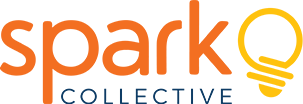Ever launched a website only to hear crickets? Visitors barely stop by, the ones who do leave quickly, and those who stay just don’t convert into customers or subscribers.
Think of your website like a storefront. No matter how amazing your products are, if your shop is slow to open, hard to navigate, or tucked away in a back alley, customers won’t stick around. Website optimization is about making your online presence easy to find, fast, and irresistible for your visitors.
What Exactly is Website Optimization?
Website optimization is all about improving your website’s performance so that it attracts more visitors, keeps them engaged, and encourages them to take action — whether that’s making a purchase, signing up for a newsletter, or simply learning more about you. It’s a blend of art and science, covering everything from technical SEO and fast loading times to great content and clever design.
Why Should You Care About Website Optimization?
You run an online store selling handmade candles. You have lovely products and reasonable prices, but your site takes 8 seconds to load, the checkout button is buried at the bottom, and when customers search “best soy candles,” your site is nowhere to be seen on Google.
That’s lost sales and wasted effort. Website optimization fixes those pain points, making your site quicker, easier, and more visible so you don’t just get visitors, you get loyal customers.
The Core Areas of Website Optimization
1. Fix the Speed and Technical Stuff
Ever left a website because it took forever to load? That’s your visitors. Use tools like WP Rocket for caching or Cloudflare for a speed boost. Compress your images with plugins like Smush, and switch to smart formats like WebP. Google now cares deeply about how fast your pages load — this is called Core Web Vitals (think metrics like Largest Contentful Paint and Cumulative Layout Shift).
Example: One candle shop I know cut load time from 10 seconds to 2 seconds and saw a 30% sales jump overnight.
2. Make Your Content Speak to Your Audience
Research the words your customers type into Google and write content that answers exactly what they need. Use those keywords naturally in titles, headings, and page copy. Don’t just tell them what you sell — tell them why it matters.
Example: Instead of “Soy Candle Shop,” a better homepage headline would be, “Eco-Friendly, Long-Lasting Soy Candles That Create Cozy Atmospheres.” See the difference?
3. Design for People — Not Just Bots
Create a clean, simple design. Make sure your navigation is obvious, your site looks great on phones, and your calls to action (like “Shop Now” or “Get a Free Sample”) are bold and easy to find.
Example: A blog I follow saw a 25% increase in newsletter signups simply by changing the button color from gray to a bright orange.
4. Convert Visitors into Customers
Use social proof — reviews, testimonials, or trust badges — to build confidence. Tools like Hotjar show you where users click, and A/B testing tools help you try different headlines or images until you find what works best.
Example: A local bakery increased online orders by 20% after adding customer reviews and featuring a “Buy Now” button at the top of their homepage.
5. Build Your Website’s Reputation Beyond Your Pages
Quality backlinks from other websites and active social media promotion drive authority and traffic. Don’t overlook local directories if you’re targeting nearby customers.
What’s New in 2025? The AI Factor and Beyond
Smart AI (like Bing AI and Google Bard) now scan not just for words but for content quality and relevance. Your website needs to sound human — helpful, clear, and trustworthy — and be structured well to be “understood” by these AIs.
Handy Tools to Get Started Right Now
- Google Search Console & Analytics: Track who visits and how they behave.
- WP Rocket & Cloudflare: Boost site speed.
- Yoast SEO: Friendly SEO help if you use WordPress.
- Hotjar or Microsoft Clarity: See heatmaps of real visitors.
- Google Optimize: Experiment with page layouts to improve results.
Final Thoughts: Start with Your Visitors in Mind
Website optimization is a journey, not a one-time fix. It’s about putting yourself in your visitors’ shoes and constantly tweaking your site so it loads quickly, answers their questions, and guides them effortlessly to the next step — whether that’s buying, subscribing, or reaching out.
Start with simple wins like improving your homepage headline or speeding up images. Over time, these small improvements add up to a website that works hard for your business, just like you do.
Ready to turn those silent visitors into happy customers? Let’s optimize! Contact us today.

